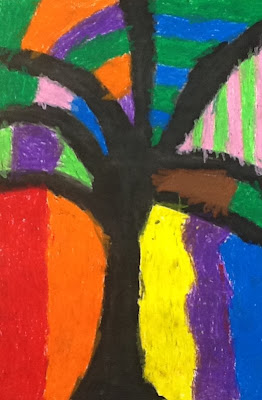Analogous Colors
Tempera Paint
Fifth Grade studied the color wheel. They learned how to mix colors to get other colors. We reviewed primary, secondary, complimentary, warm and cool colors.
Then we added the word, Analogous, to our vocabulary. Analogous colors are three colors that are right next to each other (or neighbors) on the color wheel.
Students created abstract works using yarn and black paint.
Next they used an analogous color scheme, using tempera paint as their media.
They had to mix their colors using only primary colors: Red, Yellow & Blue.
We were going to make these into our personal art journals, but we thought they were too beautiful to fold in half.
Bravo Fifth Grade!

































